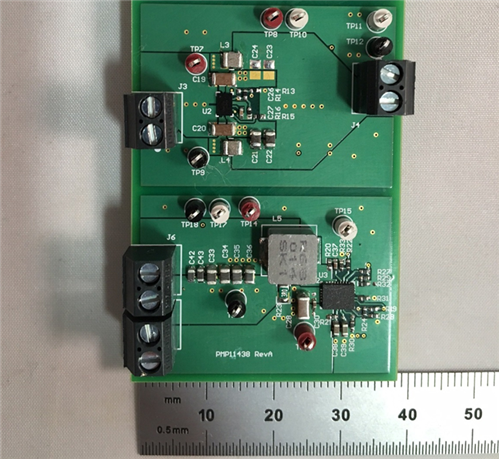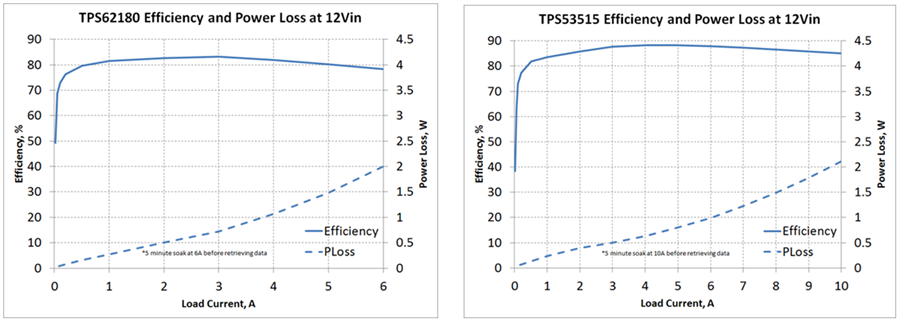SSZTBN8 February 2016 TPS53513 , TPS62180
When I started at TI, one of the first power supplies that I worked on was a high-current two-phase buck power supply for a processor core. The current was 40A – pretty large at the time, and too high to implement in a single stage. Most power-supply designers look to multiphase applications to split up high-current rails into stages that are more manageable in terms of power dissipation and size. You can also apply the same principles to lower-current systems to greatly reduce the size, while maintaining the other benefits of multiphase converters.
To illustrate how the multiphase approach compares to conventional single-stage designs, let’s look at a power-supply design for DDR4 memory. The input voltage for this design is 12V +/-10% and the output supplies 1.2V at up to 6A. I’ll compare two TI Designs Low Power DDR Memory Power Supply Reference Designs , both available on the TI Designs website. One uses the TPS62180 in a two-phase configuration, while the other uses the TPS53513. Figure 1 shows the two boards tested.
 Figure 1 The TPS62180 (Top) and
TPS53513 (Bottom)
Figure 1 The TPS62180 (Top) and
TPS53513 (Bottom)The total size for the two-phase solution is 10mm by 15mm, while the single-phase solution is 30mm by 15mm. You could optimize the components for both solutions further to reduce the space, because the size is really driven by the magnetics. The two-phase solution uses two 2mm-by-1.2mm inductors, while the single-phase solution uses one 7mm-by-6.5mm inductor. The two smaller inductors take up much less volume and are lower in cost than the single inductor.
Clearly, you can reduce space by going to a multiphase approach. But what about the efficiency? Figure 2 compares both supplies.
 Figure 2 Efficiency Comparison of the
TPS62180 and TPS53513
Figure 2 Efficiency Comparison of the
TPS62180 and TPS53513Full-load efficiency for the two-phase solution comes in at just under 80%, while the single-phase solution is around 87%. So there is a penalty in efficiency for greatly shrinking the size.
One point not clear from the graph above is the light-load performance. The efficiency at 15mA for the two-phase supply is 50%, while for the single phase it is 35%. This represents a difference of 20mW of lost power. While the difference is small, in a portable application this can lead to longer battery life.
Power-supply designers are always pushed to make smaller, more efficient designs. By taking a two-phase approach, you can save significant space, but at the sacrifice of full load efficiency. If efficiency is still the most important factor, there are solutions for that as well.
Special thanks to Ryan Manack for helping with the two designs and testing.
Additional Resources
- See my latest EE Times Power Tip post: Multiphase Power Supplies: Not Just For High Current for more about the topic covered in this post.
- Explore more power-supply topics
- Watch Power Tips videos to help with your design challenges